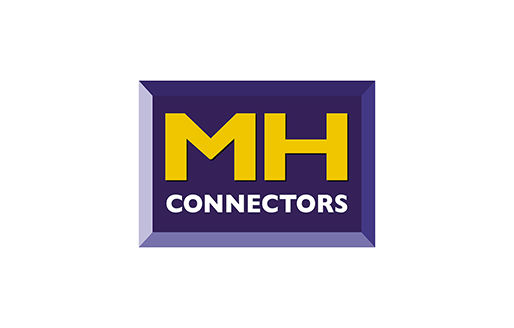D-Sub hoods and D sub backshells play a vital role in protecting connectors and cables to ensure the overall product is reliable. Many people overlook them but they should be given greater consideration when designing products involving cable assemblies.Plastic Backshell, Metallised Plastic or Metal Backshells?Plastic D-sub backshells are the cheapest solution. They do not offer any EMI/RFI shielding. They are not as resistant to harsh environments as metalised plastic hoods and die-cast metal backshells. Plastic backshells are usually used in less demanding applications where signal interference, vibration and shock are not needing consideration. Plastic backshells are available in various sizes, accommodating standard D-sub connectors and high density D-Sub connectors. There are a large variety of cable exit and mounting hardware options. Most plastic d-sub backshells are black in colour as standard but are generally available in a range of colours to make cable installations far easier.Metalized plastic backshells keep costs lower whilst providing abrasion resistance and shielding. This can often allow the user to design into applications with slightly more demanding operating environments than if they were to just use a plastic d-sub backshell.Metal backshells are often the most costly but they offer high reliability when being used in harsh environment applications. They are most commonly zinc with nickel plating and provide excellent EMI/RFI shielding. Other materials are aluminium with a nickel finish which is light weight, steel with a zinc plating or glass-filled polyester for vibration applications.If you have a rugged application, you should be able to fulfil your requirement with a metal d-sub hood as there are numerous sizes which can accommodate a standard d-sub or high density d-sub connector.Our D-Sub Backshell video can also give you a further insight into the possibilities available: Accessories, Locking and Mounting HardwareThere is a wide variety of locking and mounting hardware options available for your plastic backshells and metal backshells and the choice is usually application driven.Some d-sub backshells have external cable clamps or strain relief inserts which offer additional protection to prevent damage to wires and cable in harsh environments.Screw fixing or quick snap locking are the two main locking options. The quick snap is ‘quick’ and consequently more economical. The screw fixing hoods would be a more reliable option for a harsh environment.To secure the d-sub backshells to the panel mount connector, there are a number of options. Using screws is the most reliable option and there are pan head screws which can be tightened with a slotted or Philips screwdriver.There are also thumbscrew options of either short jackscrews or long jackscrews (male or female) in plastic and metal that can be used.There are also spring clips and slide lock alternatives but these wouldn’t be recommended for more rugged applications. Factors to consider would include, how accessible the connection is, how often it will need to be plugged in and how much vibration is anticipated.There are hoods which can have the company logo added, so if the piece of equipment has the d-sub backshell on display, this might be a consideration.The ‘G’ D-Sub backshell from Positronic offers a crimp ferrule system and is recommended when maximising EMI/RFI protection. It provides a low impedance connection of the cable shield to the backshell which remains constant over time. The ferrule system provides an EMI/RFI tight exit point and it provides a high mechanical retention of the cable in the backshell. Cable EntryMost backshells offer one cable entry as standard but there are many options with two or three cable entry possibilities within the same d-sub backshell. The most common entries are the straight 180 and the right angle 90 entry. The 45 cable entry is the next most popular and others are less common. It is worth taking time to consider the correct d-sub backshell cable entry for the application, so as to ensure the product working reliably. If the cables are bent at excessive angles, it can impact the mechanical longevity. By obtaining the correct cable entry with the d-sub backshell, you can prevent degradation in signal integrity and shield effectiveness.It is equally as important to obtain the correct cable entry size for the overall diameter of your cable or wire. With varying strain relief inserts, grommets and clamps being offered, you should be able to secure your cable effectively and thus reduce movement to offer further reliability.Final ChoiceThere are d-sub backshells available to fit all d-sub connectors from 9 way through to 104 way. Jacarem stock plastic d-sub hoods, Metal D-sub Hoods and Metallised Plastic D-Sub backshells from MH connectors.We also sell the very popular Positronic vacuum compatible D-sub backshells.If you require any assistance on deciphering the perfect hood for your application, please contact [email protected] or phone 01494 791336. Our team will be happy to support you.
D-Sub Backshells – What you should consider









